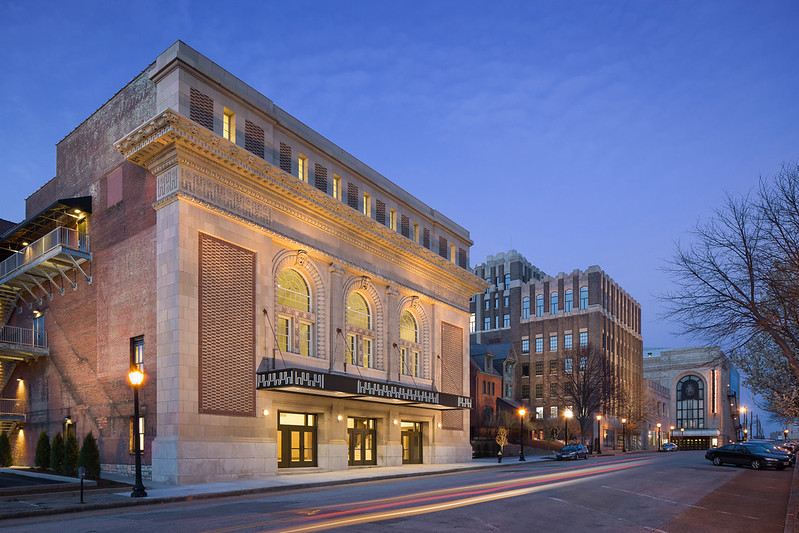 |
| Photo: Chip Cutlan, satchmos@sbcglobal.net |
By Judith Rubin
Grove East Provisions opened in early June at the corner of Arsenal and Minnesota and quickly distinguished itself with pressed sandwiches, homemade soups, freshly baked bread and savories, local craft beers and the friendly personality of proprietor and head chef Barry Kinder.
Casual, warm and welcoming, Grove East Provisions is for the person who wants to grab a bite, or a bite and a brew, or a glass of wine and a gelato in a congenial setting, and perhaps add on a few groceries or a six-pack of beer to go.
Note: This article was first published in the Tower Grove East neighborhood newsletter.
Looking around at our independently owned restaurants, eateries and shops in Saint Louis, each has a unique person driving it, differentiating it. At Grove East Provisions, it’s Barry. He’s a jack-of-all-trades, a Saint Louisan who studied music at Webster, has lived on both sides of the pond (Europe and North America), and had successes as a professional musician (percussion) a sous chef at a top French restaurant in London (the Village Bistro in Highgate), and a myriad of odd jobs in between.
Now all of Barry’s skills, talent and spirit – and his Saint Louis connections - have come to play in Grove East Provisions - and like the ingredients of his popular chicken soup, the combination is attractive and pleasing to customers.
There’s a big dose of comfort in this place – from the food and libations, to the snug booth seating, to Barry’s hospitality.
Two businesses are in fact housed here. Back of the Provisions building, near the herb and tomato garden, stands a brick oven operated by Red Fox Bakery. Sweat equity built it: Barry and the Red Fox team, Jake Marks, Chris Sheets and Jenny Wilson. Provisions sells the fresh bread, ricotta cheese tarts and other items such as the much-in-demand salted chocolate rye cookies.
Shelves and refrigerated cases hold dry goods, bottles of wine, Excel sodas and beer from 4Hands, Civil Life, Schlafly, Urban Chestnut, Crown Valley, Excel and a new guest beer all the way from Kansas, Tallgrass. “I just love beer and what’s happened in Saint Louis with beer, how craft beers have been adopted by the community,” Barry says.
 |
| Photo: Chip Cutlan, satchmos@sbcglobal.net |
Barry already has plans to reconfigure the space to liven up the produce and grocery displays and add more tables, going for something more “bistro-like.” This will support the Sunday afternoon programming he’s begun, that so far includes a wine tasting and afternoon of live music. He’s adjusting the mix as he goes along and finds what works for him and for his customers.
“I’m happy that the balance has been about 70% sandwich/restaurant, and 30% grocery,” he says. Although it has been a few years since his professional cooking days, he’s taken on that role with enthusiasm and will continue to expand the menu. “I’m working the restaurant more, adding more hot food, starting with soups. My first soup was carrot and lemon ginger. Then the beer-cheese soup, then chicken noodle, and now chili. I plan to add stews soon, such as ham-and-bean, cornbread, curries over rice, and eventually, rotisserie chicken.”
The recipes are all his own, “made from scratch with real food,” he emphasizes. “The chicken soup is one of my own traditions: I have made it practically once a week for years, but now I make it with homemade noodles.” Before chicken soup came onto the Provisions menu and became the best seller, the most popular items were the meatloaf sandwich and the club. All the dishes are surprisingly, refreshingly un-salty for Saint Louis fare.
The spark of Grove East Provisions came to Barry in Dec 2012. Another local business owner, Chris Shearman of Gelateria del Leone, was a catalyst. “He introduced me to Jake & Chris [Sheets]. He thought Red Fox Bakery would be a great fit with my place, and it is,” says Barry. "I did research on bread, and they told me about the crazy, outdoor oven they wanted. It seemed like a good thing to me - I can’t have an oven in the kitchen because there’s no hood. I thought the city would never go for it, but it turned out not to be that big of a deal. Chris Sheets masterminded the design.” Barry makes use of the oven on Red Fox’s non-baking days. In addition to the oven, the group built an authentic, maple-topped baker’s table for the kitchen themselves.
The day was gray, damp and stormy as Barry and I sat discussing Grove East Provisions over a bottle of 4Hands Chocolate Milk Stout. A customer, Sharon Fowler of Compton Heights, volunteered a testimonial as she zipped up her raincoat. She had discovered Provisions the day before, and returned for more. “The wine is great, and the chicken soup is so inspiring. I will brave a thunderstorm for Barry’s chicken soup.”
Personally, I’m waiting for the rotisserie chicken.
 |
| Photo: Chip Cutlan, satchmos@sbcglobal.net |










